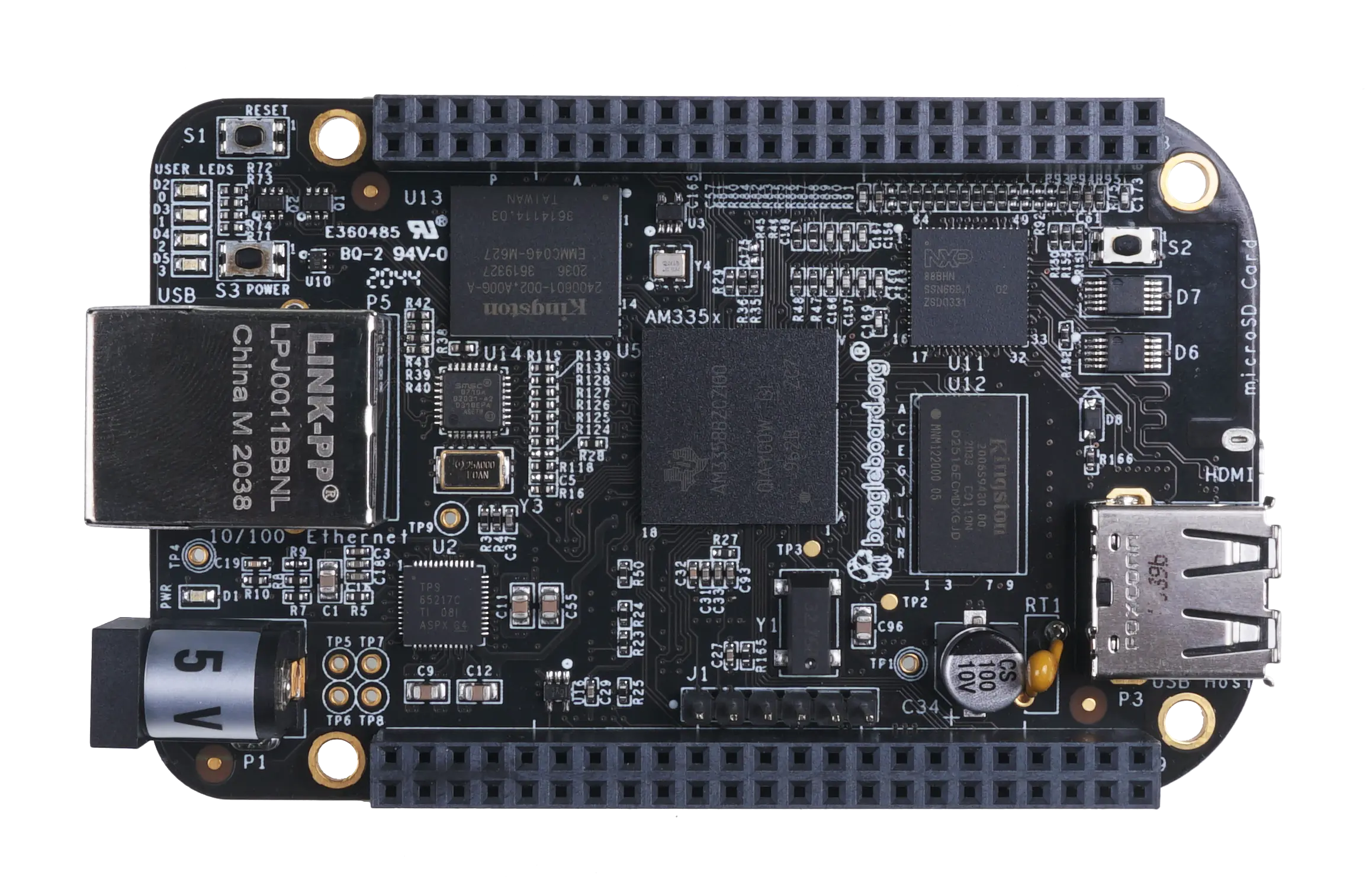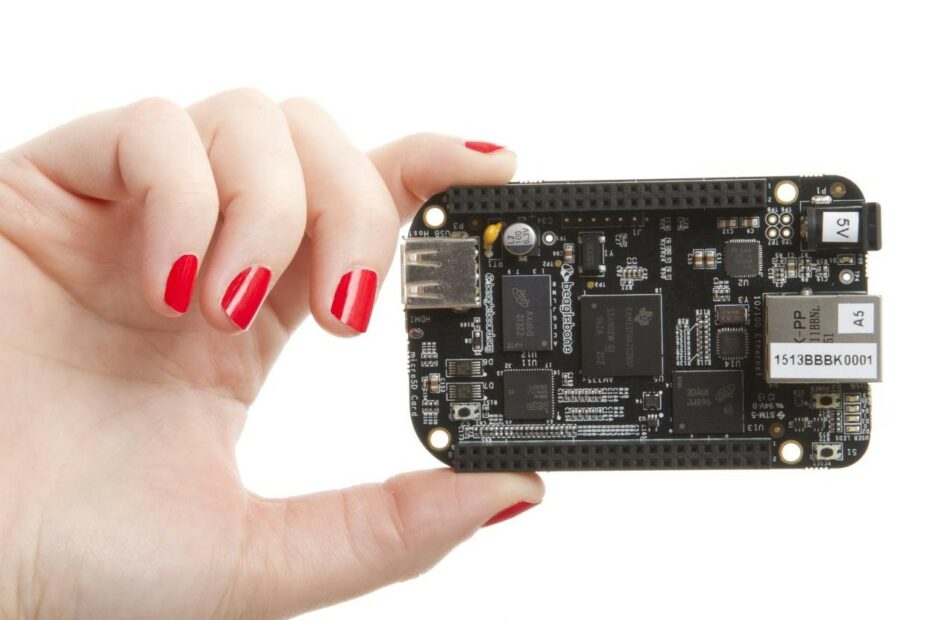BeagleBone Black has emerged as a prominent player in the realm of single-board computers, offering a blend of performance, versatility, and connectivity. With over 1 million units sold worldwide since its launch in 2013, it has gained widespread recognition among developers, educators, and hobbyists. Its 1GHz ARM Cortex-A8 processor and 512MB DDR3 RAM provide ample processing power for a variety of applications. Additionally, BeagleBone Black’s 92 GPIO pins offer extensive connectivity options, enabling seamless integration with peripherals. Its popularity is further bolstered by a vibrant community, with over 250,000 active users contributing to its ecosystem.

Advantages of BeagleBone Black
BeagleBone Black offers a plethora of advantages that make it an appealing choice for a wide range of embedded projects:
Powerful processing
Powered by a 1GHz ARM Cortex-A8 processor, BeagleBone Black delivers robust performance capable of handling a variety of computational tasks. Whether you’re running complex algorithms, processing multimedia content, or interfacing with external peripherals, BeagleBone Black provides the processing power you need.
Ample connectivity options
BeagleBone Black features an array of connectivity options, including Ethernet, USB, HDMI, and 65 GPIO pins, enabling seamless integration with a diverse range of peripherals and devices. This connectivity versatility makes it suitable for applications requiring networking, data transfer, and sensor interfacing.
Real-time capabilities
One of the standout features of BeagleBone Black is its real-time processing capabilities. Equipped with a PRU (Programmable Real-Time Unit) subsystem, BeagleBone Black can execute time-critical tasks with deterministic precision, making it ideal for applications such as robotics, automation, and data acquisition.
Extensive community support
BeagleBone Black boasts a vibrant and active community of developers, enthusiasts, and educators who contribute to its ecosystem. This rich community support translates into an abundance of resources, including documentation, tutorials, and open-source projects, making it easier for users to get started and troubleshoot issues.
Open-source architecture
Built on open-source principles, BeagleBone Black offers transparency, flexibility, and customization options. Users have access to the board’s schematics, firmware, and software stack, empowering them to modify and extend its functionality according to their requirements. This open ethos fosters innovation and collaboration within the BeagleBone ecosystem.
Branching out: Connecting BeagleBone Black
Connecting BeagleBone Black is a straightforward process, allowing users to quickly get started with their projects. Here’s a brief overview of the common connections:
Power Supply: BeagleBone Black can be powered via a micro USB port or through a DC barrel jack using a 5V power adapter.
- HDMI: The HDMI port enables users to connect a monitor or display for visual output.
- Ethernet: BeagleBone Black features a 10/100 Ethernet port for wired network connectivity.
- USB Ports: Multiple USB ports are available for connecting peripherals such as keyboards, mice, and USB storage devices.
- GPIO Pins: BeagleBone Black offers 92 GPIO pins, which can be used for digital input/output, analog input, PWM output, and various communication protocols.
Technical specifications of BeagleBone Black
- Processor: 1GHz ARM Cortex-A8
- Memory: 512MB DDR3 RAM
- Storage: 4GB eMMC Flash
- Connectivity: 10/100 Ethernet, USB 2.0, HDMI
- GPIO: 92 Digital I/O pins, 7 Analog input pins
- Operating system: Linux-based distributions such as Debian, Ubuntu, and Angstrom
Drawbacks of BeagleBone Black
Despite its numerous advantages, BeagleBone Black does have some limitations that users should consider:
- Price: BeagleBone Black may be relatively more expensive compared to other single-board computers in its class, which could be a deterrent for budget-constrained projects.
- Learning curve: The advanced features and real-time capabilities of BeagleBone Black may present a steep learning curve for beginners, requiring familiarity with Linux-based systems and programming in languages such as Python or C.
- Availability of resources: While BeagleBone Black benefits from a supportive community, it may not have the same breadth and depth of documentation, tutorials, and libraries as more mainstream platforms like Arduino or Raspberry Pi.
In conclusion, BeagleBone Black stands out as a formidable single-board computer, offering powerful processing, extensive connectivity, and real-time capabilities. Its open-source architecture, coupled with a vibrant community, provides users with the tools and resources needed to realize their creative visions. While it may have some drawbacks, BeagleBone Black remains a compelling choice for enthusiasts, educators, and professionals seeking a versatile platform for their embedded projects.
For more details, visit the official website docs.beagleboard.org
